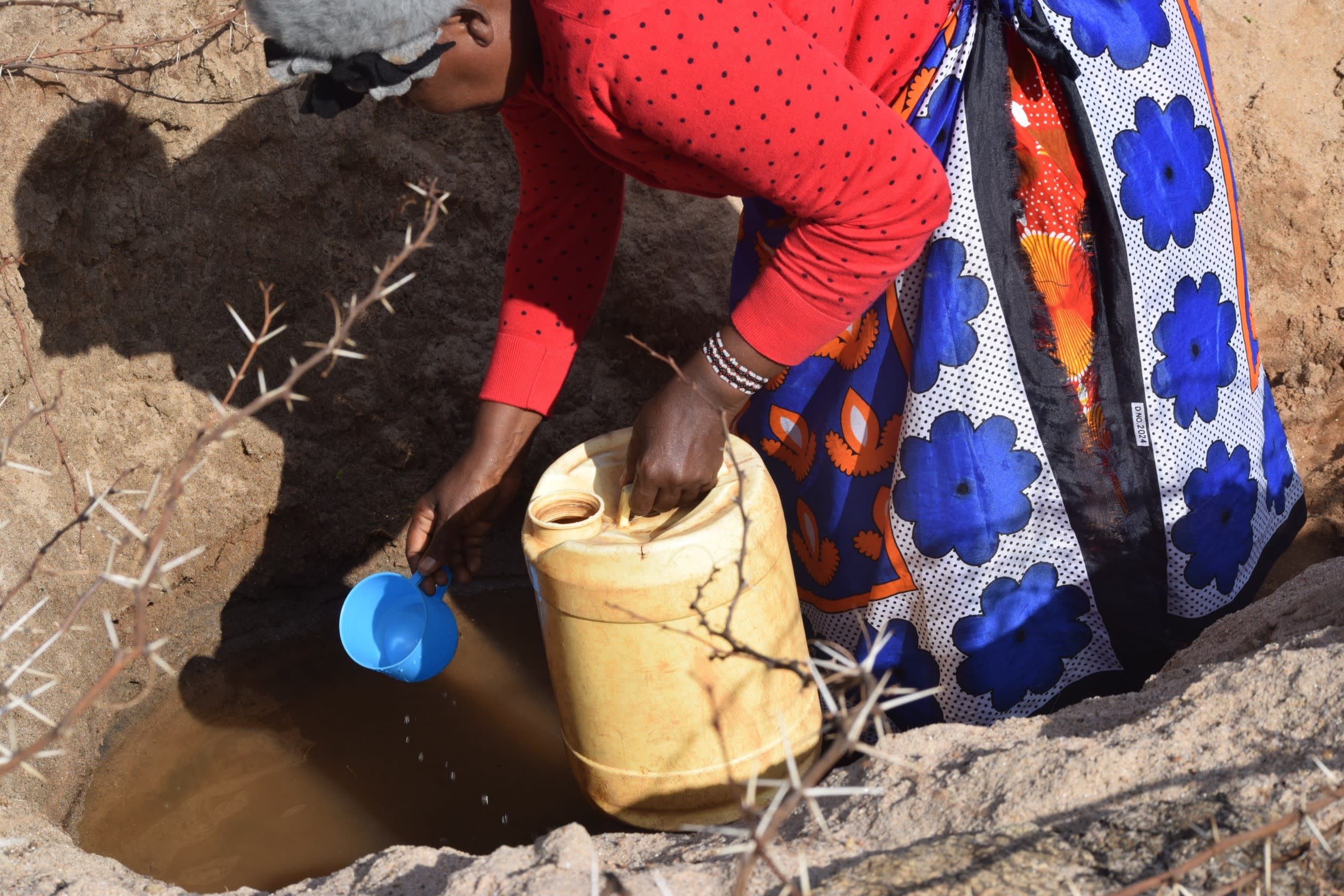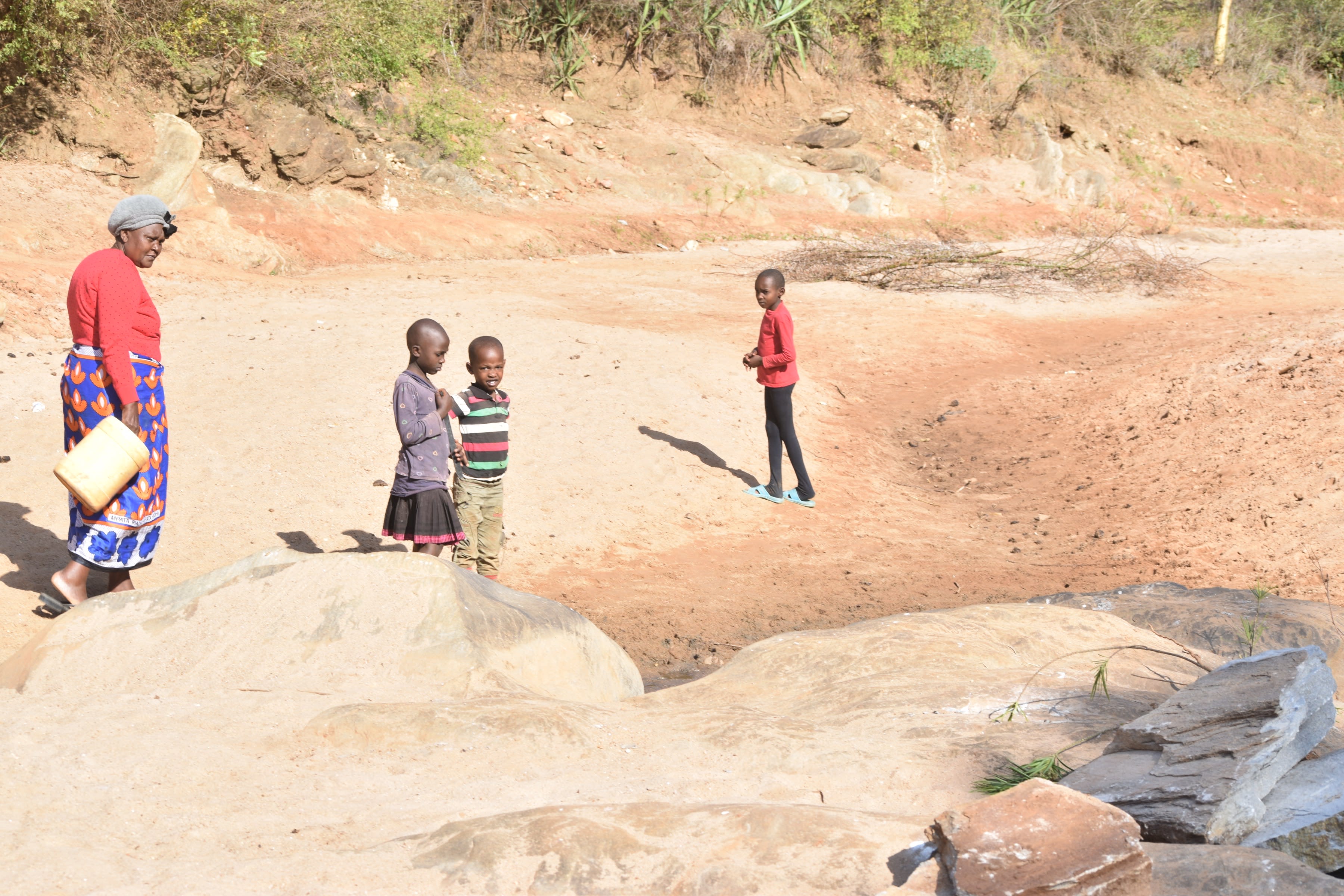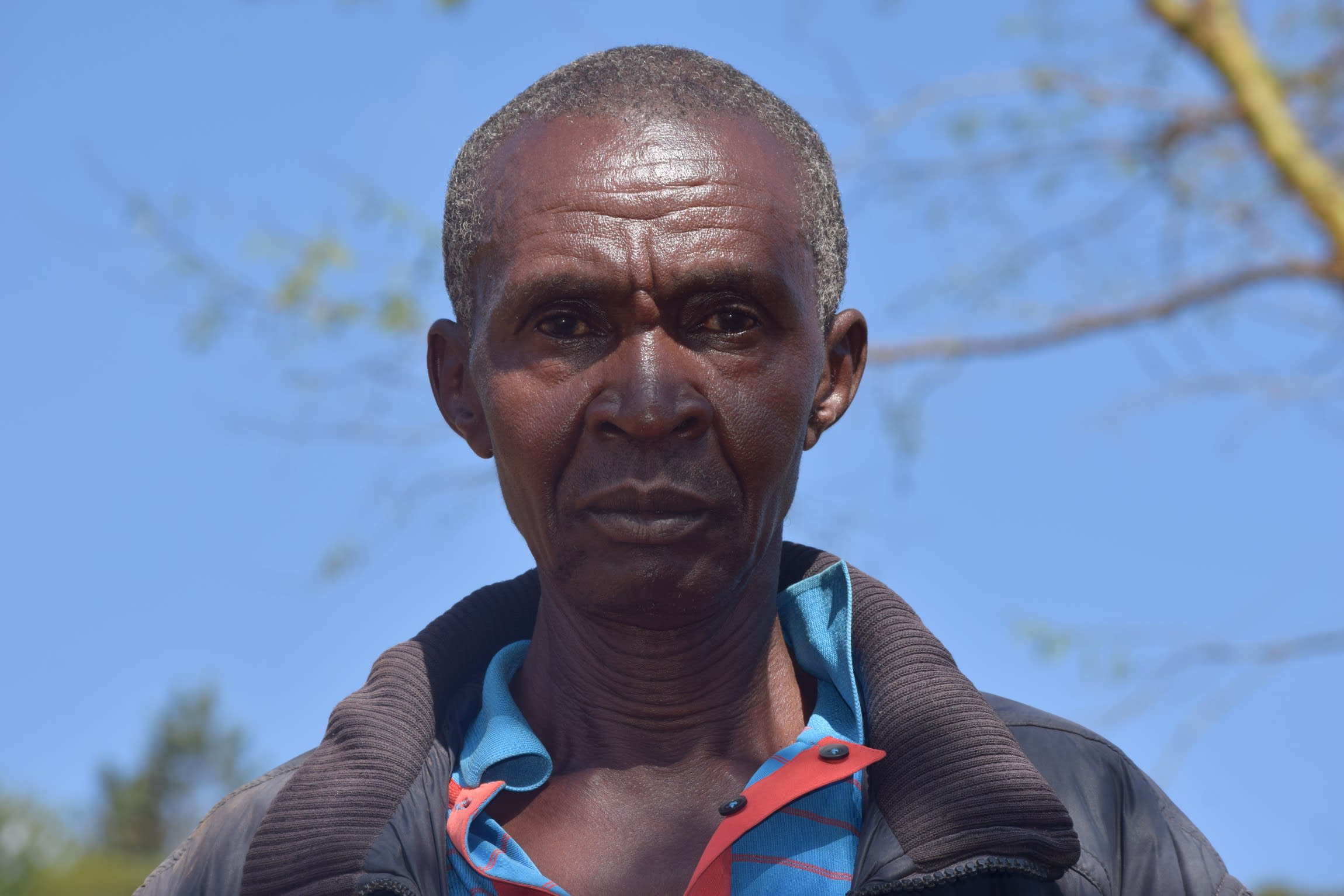Water scarcity is Kivai and Kimwatho Communities' most pressing challenge. The problems with the water situation in Kivai and Kimwatho are almost too numerous to detail.
Most of the rivers here are seasonal, holding water only during the rainy season and a few months after. Community members trek long distances to access water, having to dig deep scoopholes.

Mary Mutisya, 60 (pictured above), avoids the whole ordeal—when she can afford it. "It is very costly to buy water for drinking whenever I am unable to walk to the river," she said.
"I have to pay someone to get the water from Kivani market to get me clean drinking water. I waste a lot of time whenever I fail to get the cash as I have to get it myself. It is a pressing issue at my demanding age."
Because water is such a sought-after commodity here, the lines at each water source are long. Some community members who live far away from the riverbed spend the night at the scoopholes so they can be the first ones in line to fill their jerrycans, cupful by cupful. People spend up to four hours just waiting for the opportunity to fetch water.
Mercy, who is eight years old (pictured below in the red shirt, right), already knows the struggles of fetching water in her community. "Walking to the river every morning is very hectic," Mercy said. "I always accompany my mother to the river. We end up spending most of our day there trying to fetch some water. I miss playing with other children as we get home late and [I am too] tired to play."

If Mercy's mother leaves her at home while she fetches water, that poses another issue. "I have to wait for my mother to go and fetch the water to come and make food for us. In the morning when she leaves, I get nervous being left at home alone so much."
The scoopholes are open to all forms of contamination. Even after the water is boiled, it's been known to cause dysentery, cholera, scabies, typhoid, and brucellosis, amongst other conditions. And humans aren't the scoopholes' only customers. Wild animals who are also looking for a spot to drink have been known to attack those standing in line. The animals are fierce in their desperation for water.
The sources of water community members can find are not only contaminated, but they are also full of salt. Each jerrycan-full needs to be boiled before it can be used for cooking or drinking, which takes a good amount of time in kitchens where the only source of heat is a woodfire. People waste a lot of soap trying to remove the crust of salt from their clothes during laundering.
The people of Kivai and Kimwatho already have ventilated latrines and handwashing stations. Cleanliness is important to them. If they only had a source of clean and reliable water so they could more easily wash their homes, dishes, clothes, and latrines, their standard of living would be greatly improved.
What we can do:
Our main entry point into the community is the Kivai Kimwatho Self-Help Group, which is comprised of households that are working together to address water and food scarcity in their region. These members will be our hands and feet in both constructing water projects and spreading the message of good hygiene and sanitation to everyone.
Sand Dam
After the community picked the ideal spot, our technical team went in and proved the viability by finding a good foundation of bedrock. Now, our engineers are busy drawing up the blueprints.
We are unified with this community to address the water shortage. As more sand dams are built, the environment will continue to transform. As the sand dams mature and build up more sand, the water tables will rise. Along with this sand dam, a hand-dug well will be installed to give community members an easy, safe way to access that water.
Building this sand dam along with the well in this community will help bring clean water closer to hundreds of people living here.
Training
These community members currently do their best to practice good hygiene and sanitation, but their severe lack of water has been a big hindrance to reaching their fullest potential.
We will hold hygiene and sanitation training sessions with the Kivai Kimwatho Self-Help Group and other community members to teach about important hygiene practices and daily habits to establish at the personal, household, and community level. This training will help to ensure that participants have the knowledge they need to make the most out of their new water point as soon as water is flowing.
One of the most important topics we plan to cover is the handling, storage, and treatment of water. Having a clean water source will be extremely helpful, but it is useless if water gets contaminated by the time it is consumed. We will also emphasize the importance of handwashing.
We and the community strongly believe that all of these components will work together to improve living standards here, which will help to unlock the potential for these community members to live better, healthier lives.
We typically work with self-help groups for 3 to 5 years on multiple water projects. We will conduct follow-up visits and refresher trainings during this period and remain in contact with the group after all of the projects are completed to support their efforts to improve sanitation and hygiene.

 Sand Dam
Sand Dam
 Rehabilitation Project
Rehabilitation Project




























